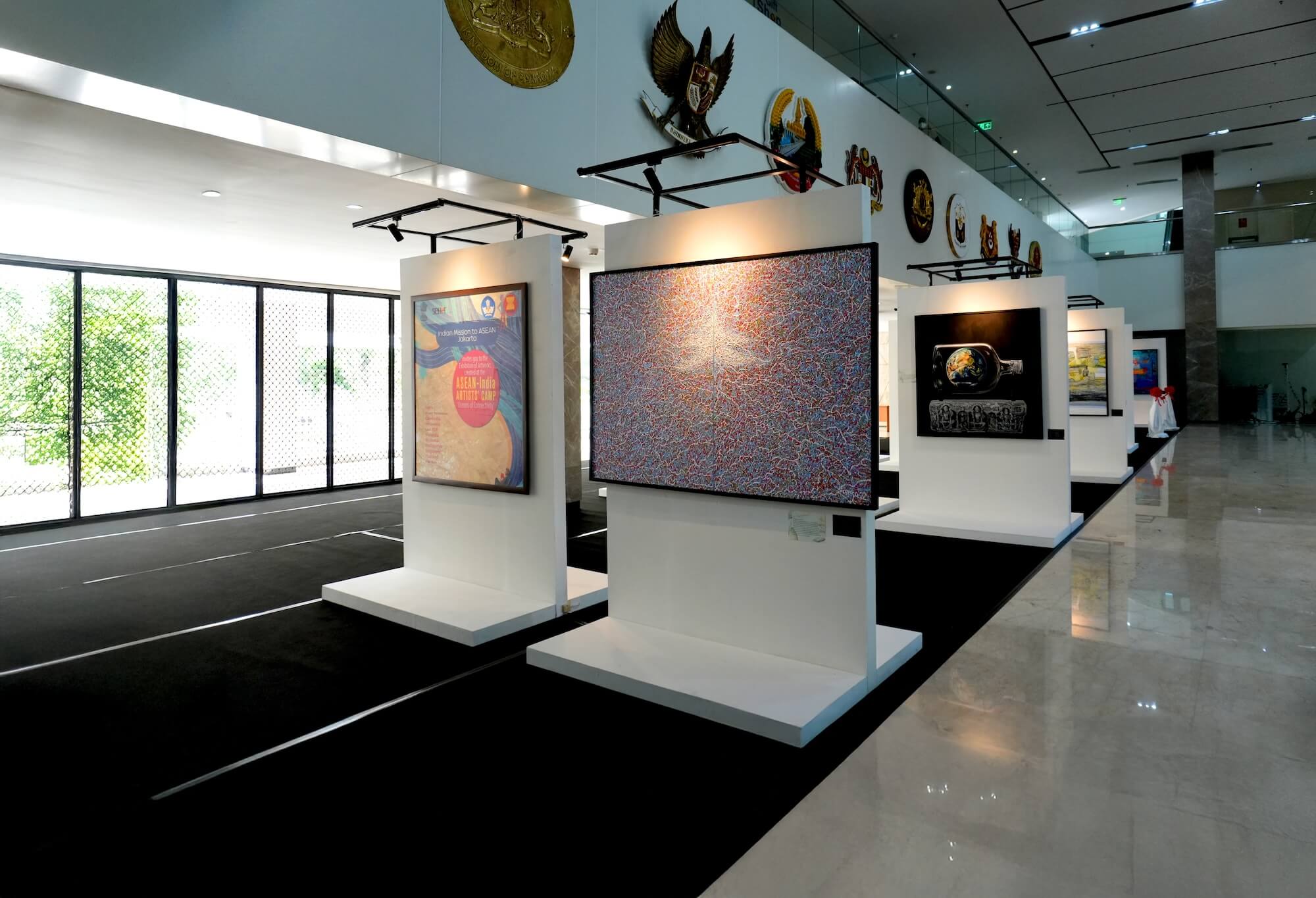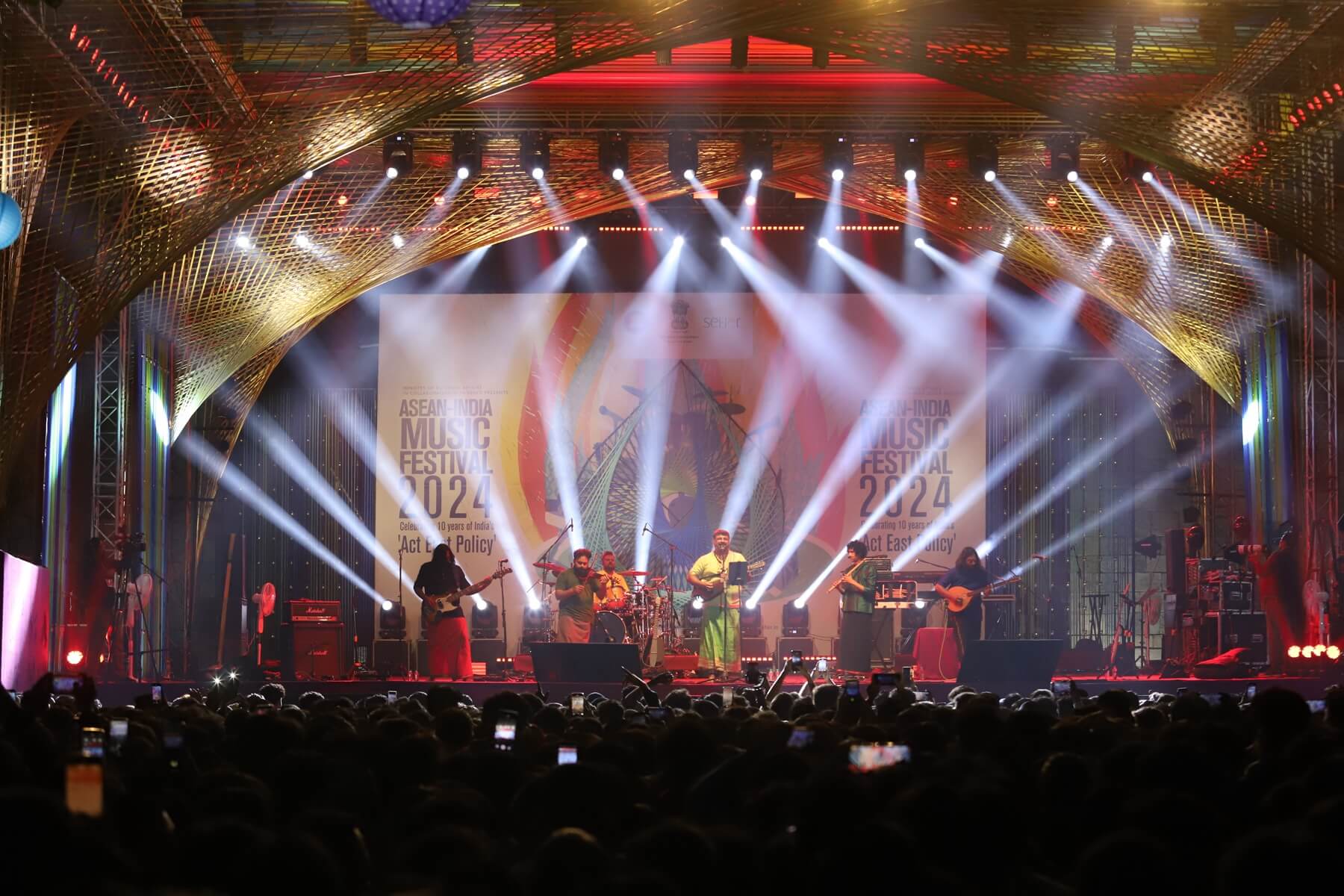




ASEAN has, since its inception, facilitated people-to-people exchange in the arts sector across Southeast Asia to encourage dialogue and debate. This unique space for artistic discourse, which fosters pluralistic notions of what constitutes a regional artistic identity and aesthetic, is one of ASEAN’s great legacies and is widely acknowledged, researched, and discussed by a new generation of art historians and curators.
Key projects in recent history include the ASEAN Sculpture Symposiums (1981-1990), ASEAN Workshops, Exhibitions, and Symposiums on Aesthetics (1989-1995), and Phillip Morris ASEAN Art Awards (1994-2006). In the last 15 years, ASEAN has relinquished this role—an important aspect of its community building aspirations in the arts sector—encouraging the proliferation of nation specific biennales and art fairs, and allowing maturing cultural institutions to serve this function in its stead.
In 2019, South Korea celebrated 30 years of diplomatic relations with ASEAN. In the same year the ASEAN-Korea Cooperation Fund was doubled to 14 million US dollars and a new arts and cultural programme was established, KONNECT ASEAN. A key driver of South Korea’s New Southern Policy to strengthen ties of friendship and cooperation with ASEAN through the three pillars of people, prosperity and peace, KONNECT ASEAN will serve as the ASEAN Foundation’s core arts and cultural programme over the next three years. In the words of H.E. Lim Sungnam, Korean Ambassador to ASEAN, “…diplomatic relations are like personal relationships. ASEAN-Korea relations could make rapid progress not only on the basis of common interests but also mutual trust and shared values. Indeed, ASEAN and Korea are natural partners in every sense. Geographically, both of us are in East Asia. Historically, we share similar experiences. ulturally, our values are almost identical. (The Jakarta Post, November 2019).”
As the post-Cold War reality of a new world has taken shape and formed new directions and conversations, KONNECT ASEAN heralds a new era for cultural diplomacy and regional integration between ASEAN Member States and South Korea signalling both an eagerness by ASEAN to revitalise its once integral role in the contemporary arts and South Korea’s sincerity in establishing closer ties with ASEAN. The programme will celebrate the arts with partner organisations across the region, and in the process explore and discuss social, political, economic, and environmental issues. The artists’ works and activities will engage and strengthen the public’s understanding of ASEAN and connect the three major stakeholder groups of government, business, and civil society to achieve the vision of an ASEAN Community.
A June 2020 article in Singapore’s The Straits Times caused quite a stir amongst international arts circles for publishing the results of a survey denouncing artists as “non-essential workers.” As many of us have endured the global pandemic with books, music, film, and other art forms, we are now more than ever acutely aware of how important it is for us to share in and understand our collective destinies. Investment in arts and cultural programmes is an essential element to realise regional integration and goes hand in hand with security concerns. Many nations throughout recent history have understood the societal need to facilitate arts and cultural activities especially following times of adversity. South Korea established Asia’s oldest biennale in the mid 90s to commemorate the 1980 Gwangju Democratisation Movement, a tragic chapter in the nation’s history. The Gwangju Biennale embodies the general value of human civilisation and disseminates a message of democracy, human rights, and peace throughout the world and its local community. The Gwangju Biennale is now recognised as amongst the world’s most important biennales, influential Nigerian curator Okwui Enwezor being appointed as Artistic Director of the 7th edition in 2008. Reflecting on his participation he remarked that, “…judging from the shape and turn of events, the clockwork convergence of Asia’s polyglot cultures, the large and still-growing consumer society and middle class, and the rapidly changing technology that knits them together, it may not be premature to think that we are facing an Asian moment. This emergence of global Asia, in fact, does not benefit Asia alone; it creates a model for other societies in transition. (Invisible Culture, September 2010).”
The work of artists connects us in tangible and dynamic ways to the world, advancing diplomatic efforts and building deep connections, mutual understanding, and goodwill, which builds resilient communities and underpins our future prosperity. Cultural diplomacy initiatives like KONNECT ASEAN are key to avoiding negative consequences of COVID-19. Now is the time for us to come together and encourage dialogue amongst our myriad ethnicities, religions, and cultures to build a better world for the future.








